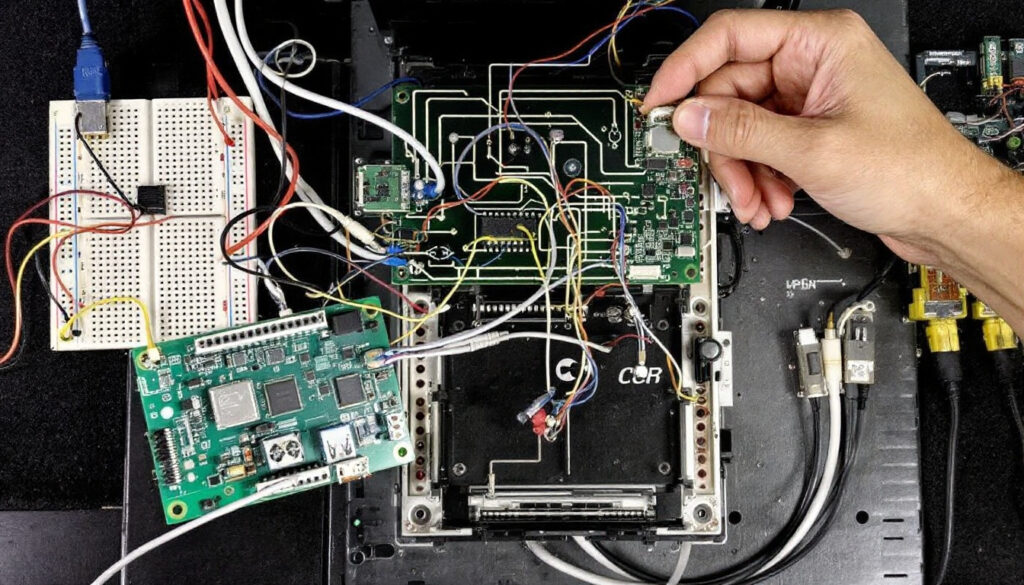Best Text to Speech Tools in 2025: Free, Open Source, and AI Solutions Compared
Text-to-speech technology is now a standard tool for improving accessibility and supporting users with diverse needs. Its applications extend beyond assistive support, driving productivity, and helping create digital content at scale. Users can access a growing range of TTS solutions, from free and open source platforms to advanced AI-driven services backed by premium providers. This comparison highlights the strengths and limitations of each option, giving a clear overview for anyone evaluating the best tools on the market in 2025. What is Text to Speech? Photo by Mikhail Nilov Text-to-speech (TTS) technology converts digital text into spoken words. This makes written content accessible as audio output. Over the past decade, TTS has grown from a tool for basic accessibility into a central part of digital experiences across many fields. Today, it supports education, automates content production, and powers interactive applications for businesses and individuals. TTS continues to evolve, offering more natural and human-like voices that improve the user experience. Definition and Core Functionality Text-to-speech is an assistive technology system that processes written text and produces computer-generated speech. At its basic level, TTS relies on algorithms and pre-recorded or AI-generated voices to read words aloud, regardless of the digital format. This technology is embedded in computers, smartphones, e-readers, and smart speakers. It enables users to listen rather than read, removing barriers for those with print disabilities or visual impairments. The system is often customizable, allowing users to choose voice type, speed, and language. You can read more in depth about TTS systems and how they work in this overview from Reading Rockets. Primary Use Cases TTS is widely used to meet accessibility standards and personalize user experiences. Its top use cases include: These uses highlight the broad appeal of TTS for everyone from students to business professionals. For a summary of accessibility and learning applications, refer to the guide on Understood.org. Recent Advancements In 2025, TTS technology stands at a new stage. The latest systems integrate artificial intelligence and deep learning, resulting in voices that are expressive, clear, and difficult to distinguish from human speech. Neural TTS engines now offer a wide range of accents and languages, improving inclusivity. Machine learning enables TTS software to adapt to domain-specific jargon and context, strengthening accuracy for professional and personal use. Recent progress has also focused on personalized speech synthesis, where the software creates or mimics specific speaking styles upon request. This delivers tailored interactions in customer support and user-facing apps. As user expectations grow, TTS has become a requirement for digital content creators, organizations, and tech platforms that want to stay competitive. Tools now support content writers, educators, and developers by making text available in both written and spoken formats without extra manual work. For more on the technical evolution in TTS, IBM provides a useful summary: What is Text to Speech?. Why TTS is More Important Than Ever in 2025 Due to remote work, increased digital content, and growing emphasis on inclusive design, TTS is no longer just a feature; it is essential infrastructure. It helps users access news, books, training, and services without relying solely on visual interfaces. Regulations and global standards now expect digital resources to be accessible—TTS is a primary driver of compliance in the technology field. Developers, educators, and content producers rely on the expanded quality and range of TTS solutions. The technology plays a central role in bridging the gap between written and spoken information, making sure content is accessible to every audience. To explore practical examples of TTS in daily life, review this guide to the evolution of TTS voice assistive technology. Top Free Text to Speech Tools: Features and User Experience The demand for no-cost text to speech (TTS) solutions grows each year, as accessibility and productivity gain priority. Users now expect software that produces natural-sounding speech, integrates with common file types, and is simple to operate across devices. The most popular free offerings on the market—Natural Reader, Panopreter Basic, and Balabolka—highlight different strengths in functionality and user experience. Below is a detailed look at each, providing a balanced comparison on core features and overall usability. Natural Reader: Best Free Overall Platform Photo by Matheus Bertelli Natural Reader is a widely acclaimed solution, offering a generous free tier for personal use. The platform covers web, desktop, and mobile devices, making it accessible for various user preferences. Natural Reader stands out for its simple interface and support for a diverse set of file formats—PDF, DOCX, TXT, and ePub, for instance. Users can paste text or upload documents directly. Key features in the free version include: This software appeals to those needing clear narration for study, work, or reading assistance. Reviews point to a consistent experience across platforms, with responsive controls and a clean design. According to a recent review, Natural Reader balances feature depth and day-to-day usability well (TechRadar, 2020). Users praise its support for accessibility needs, with voices that avoid the monotone common in older TTS systems. For teachers and students, the platform receives positive remarks for helping with reading fluency and helping those with dyslexia. While advanced voices and offline use require payment, most daily reading and educational needs are fully met by the free version. More user experiences can be viewed in the testimonials from Natural Reader’s community. Panopreter Basic: Simplicity for Beginners Panopreter Basic is an entry-level software suited for users who favor minimalism and straightforward controls. The free edition is restricted to Windows, which appeals to desktop-centered users seeking a traditional TTS system without surplus features. Main highlights of Panopreter Basic: Panopreter Basic does not pursue fancy features, instead focusing on reliable output and a direct workflow from input to playback. It works particularly well for users new to TTS tools who want to avoid distractions while converting content to audio. The basic set of options makes setup quick and helps those who do not want time-consuming configuration. Its approach is described in more detail by Panopreter’s official site. Support for multiple languages exists, subject to Windows voice packs, but the








